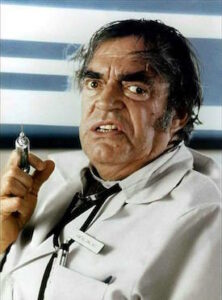
A new report from the British Medical Association has outlined the level of responsibility those in the medical associate professions should have.
Staff such as physician associates should be banned from diagnosing patients, leading medics have said, after the death of a woman whose fatal blood clot was missed twice.
The British Medical Association (BMA) has published guidance outlining what it thinks the level of responsibility those in medical associate professions (MAPs), such as physician associates (PAs) and anaesthesia associates (AAs), should have.
It is hoped the document will “improve patient safety”, the union said.
MAPs were introduced to the NHS workforce in the early 2000s to bolster access to care for patients, but have faced increased scrutiny due to high profile mistakes.
With the Government’s clear intent to expand the numbers of MAPs in the medical workforce, but without the clarity on the scope of their skills and responsibilities, it is even more important that patients must know who is treating them and the skills and abilities that clinician has. ~ Professor Phil Banfield, BMA
One example is the death of 30-year-old Emily Chesterton, who was misdiagnosed by a PA twice before eventually dying of a blood clot in 2022.
In its guidance, the BMA said MAPs must not be responsible for initially assessing or diagnosing patients and must be closely supervised when seeing patients who have already seen a doctor.
They should also refrain from using terms such as “I am one of the medical team” without stating their job title, it added.
It recommends MAPs should work using a traffic light system, with green indicating a task they can do alone, amber meaning they need supervision and red would be a task they should not do.
In general practice, the framework also sets out how associates should not refer patients for hospital care, advice and guidance unless a GP has reviewed the decision, and they should not be put in charge of triaging patients.
They should also not see patients under the age of 16.
BMA chairman of council Professor Phil Banfield said the need for national guidance outlining what MAPs “can do safely” is “paramount”.
“Our guide has been written by doctors, for doctors, to explain to the medical profession what MAPs should and should not do alongside their doctor colleagues,” he added.
Physician associates have worked in the NHS for over two decades. They have been found to be safe, positively contributing to medical and surgical teams, and patient experience, while supporting the clinical teams’ workload. ~ Department of Health and Social Care
“But it is also to help patients, to improve patient safety. With the Government’s clear intent to expand the numbers of MAPs in the medical workforce, but without the clarity on the scope of their skills and responsibilities, it is even more important that patients must know who is treating them and the skills and abilities that clinician has.”
 What you are reading is well worth your time – however – BEWARE – a fair amount of what is posted here – is based upon OPINION. I have chosen to also post comments posted on this article by patients who have experienced much of the same experiences with PA’s which I have. Frankly – with few exceptions – I have had far superior experiences with PA’s than with numerous ‘Doctahs’. – Jeffrey Bennett ~ Editor
What you are reading is well worth your time – however – BEWARE – a fair amount of what is posted here – is based upon OPINION. I have chosen to also post comments posted on this article by patients who have experienced much of the same experiences with PA’s which I have. Frankly – with few exceptions – I have had far superior experiences with PA’s than with numerous ‘Doctahs’. – Jeffrey Bennett ~ Editor
Last month, Conservative MP and working medic Dr Dan Poulter shared his experience of a mistake that could have proved fatal, telling the Commons he had to intervene when a PA did not properly treat a paracetamol overdose.
He said: “The physician associate incorrectly informed me that they didn’t require what is called NAC treatment because of their liver function test being normal, in spite of the fact that they were over the treatment line as a result of their paracetamol overdose.
“Of course, at that time, the patient’s liver function tests were normal, they wouldn’t have been for very long, and the consequences of that diagnostic decision by the physician associate could have been fatal.”
Prof Banfield warned MAPs “are working in roles that increasingly cross the line into situations more appropriately requiring the expertise of a doctor” and the BMA’s guide sets out what it “considers a safe scope of practice that will keep patients protected and allow the NHS to effectively employ MAPs to assist medical teams – which was their original purpose”.
He said that he hopes the report will lay out “clear parameters for the distinction between doctors and MAPs” and put an end to the “creeping substitution of PAs for doctors on rotas”.
The legislation … will set standards of practice, ensuring that PAs meet the standards that we expect of all regulated professionals, with the General Medical Council operating strict fitness-to-practice procedures and setting education and training expectations. ~ Department of Health and Social Care
The publication of the guide follows a BMA poll of more than 18,100 UK doctors.
It found more than half (55%) had experienced a higher workload since PAs and AAs had been brought in.
Only 21% of medics who responded to the survey reported a decreased workload, the BMA said.
Prof Banfield said NHS England was “consciously” funding the employment of PAs when “this funding is not available to employ GPs”, leading to tragic consequences such as Emily’s death.
“We had hoped this was an isolated case but, sadly, when we asked doctors, it was not,” he added.
NHS England and the Government have set out plans to increase the number of PAs to 10,000 from around 3,300 at present.
Prof Banfield said there were risks to patients and it was “not safe” to employ people with a “two-year Master’s qualification”, with PAs being put on rotas and expected to cover the work of a doctor.
A Department of Health and Social Care spokesperson said: “Physician associates have worked in the NHS for over two decades.
The NHS would not continue with the existence of MAPs if there was any doubt over the efficacy and safety of our work. ~ United Medical Associate Professionals
“They have been found to be safe, positively contributing to medical and surgical teams, and patient experience, while supporting the clinical teams’ workload – which is why we expanded the role of PAs in the NHS’s Long-Term Workforce Plan.
“The legislation regulating both PAs and anaesthesia associates has now been approved by Parliament and will be in place by the end of 2024. It will set standards of practice, ensuring that PAs meet the standards that we expect of all regulated professionals, with the General Medical Council operating strict fitness-to-practice procedures and setting education and training expectations.”

The Doctah!
A spokesman for United Medical Associate Professionals (UMAPS), an organisation formed in November which has 300 members, said: “The BMA has no right to unilaterally redefine the scope of practice of another profession.
“The NHS would not continue with the existence of MAPs if there was any doubt over the efficacy and safety of our work.
“The document published today attempts to grossly reduce the capacity of MAPs to care for patients and significantly changes the job descriptions. This will harm patients and increase costs to the NHS.
“MAPs have been working in teams across the NHS for over 20 years, with the scope of their work developed by royal medical colleges and professional associations.
“This latest attack is in keeping with prior BMA activity to undermine and degrade the skills and contribution of MAPs.”
~ COMMENTS ~
When I have an office visit with my PAC she has confirmed with the Doctor a couple times. My PAC treated me better than My Back Surgeon. I had Back Surgeries and the Surgeon had another MRI and Cat Scan done because 6 Months later I was in worse pain. Then he basically said that it’s in my head but then he said we will start shots to narrow down the source of the Pain when Insurance approves it. I had print outs of the tests and I circled something that looked wrong. I showed my PAC and she told me what was wrong and the part I circled she conferred with a Radiologist and my Spine to Hip never Developed and Connected correctly and was Deformed. Why didn’t the Surgeon tell me this? Is it because it can’t be corrected and he just wanted more $$$$$$ or what? ~ Ronald
I am in America and would rather have a PA or nurse practitioner. You get tow or three minutes with a MD. Much more care from A NP or PA. Just my experience. ~ Mark D Fawcett
In my experience, the PA actually listened to the complaints and actually ordered appropriate labs and other procedures that were needed and helped me. whereas the doctors and specialists just passed me around, so their colleagues could get paid. I received comments that it might be this. It looks like it could be that. then we’ll schedule a follow-up and see if there’s a change. ~ Carolyn Johnson
Written by Storm Newton for The Independent ~ March 7, 2024
